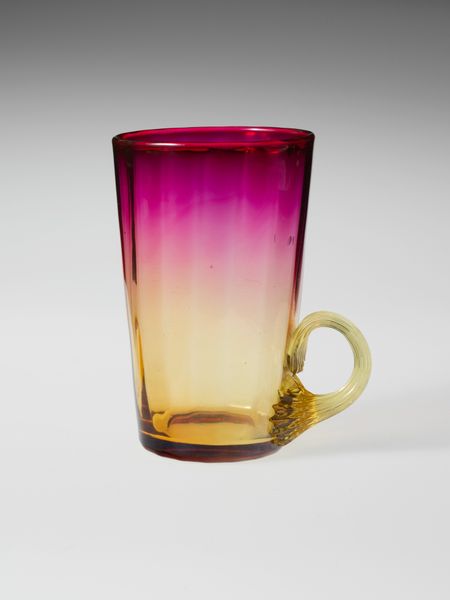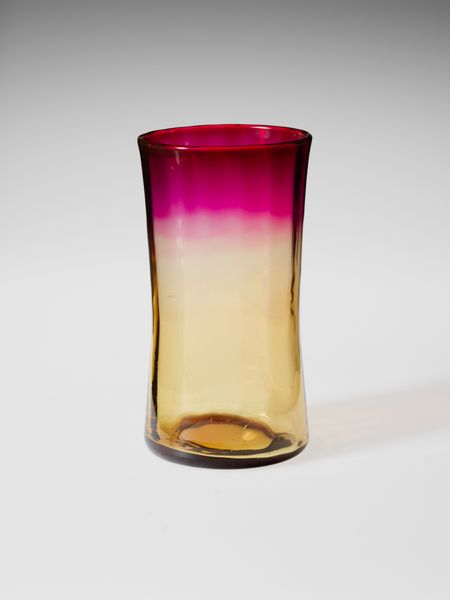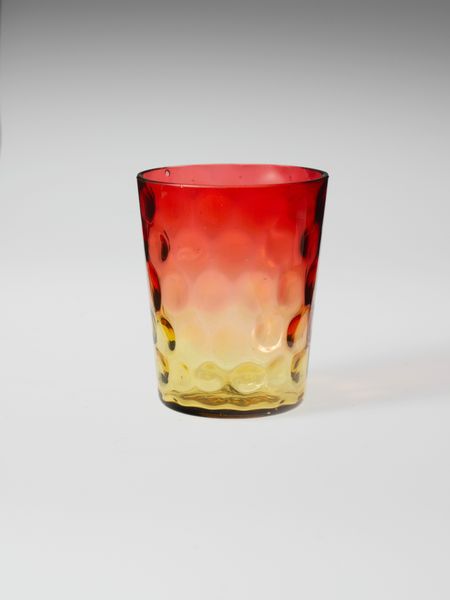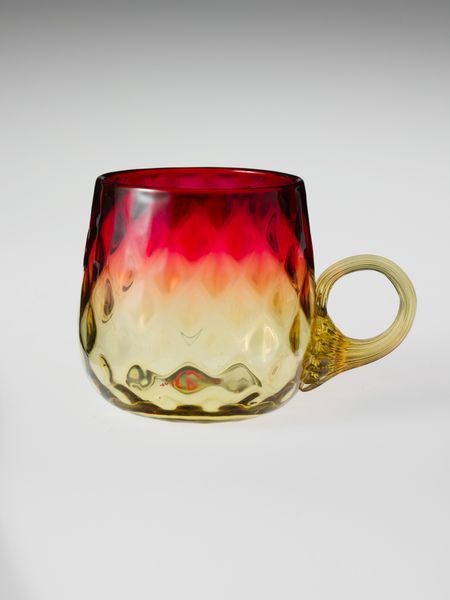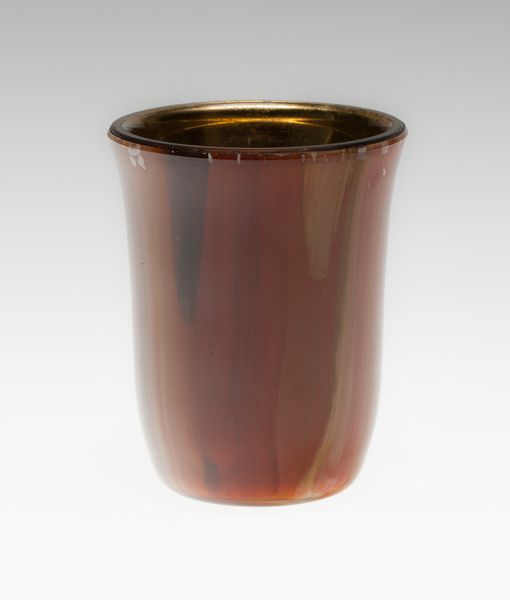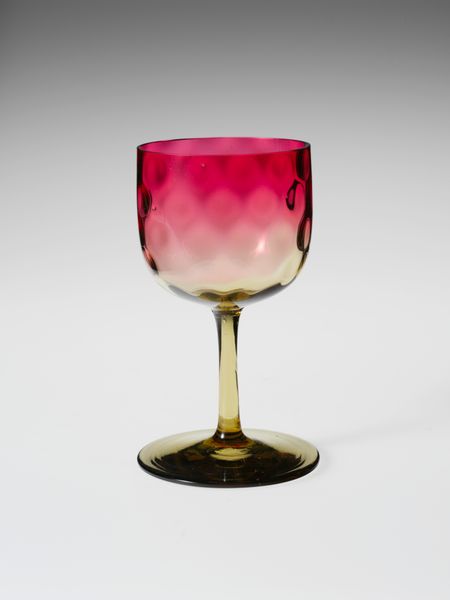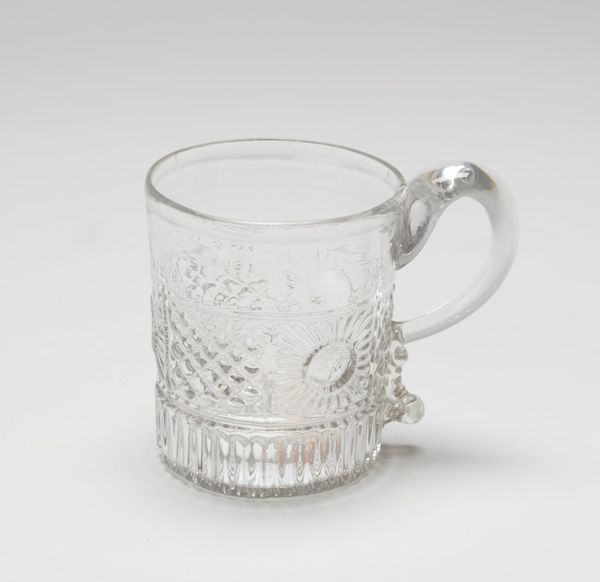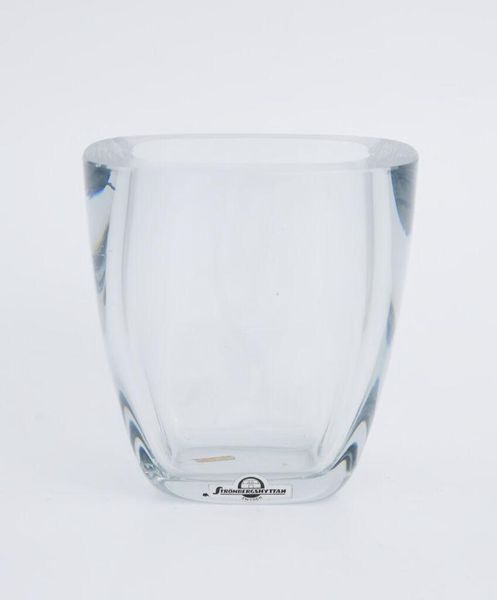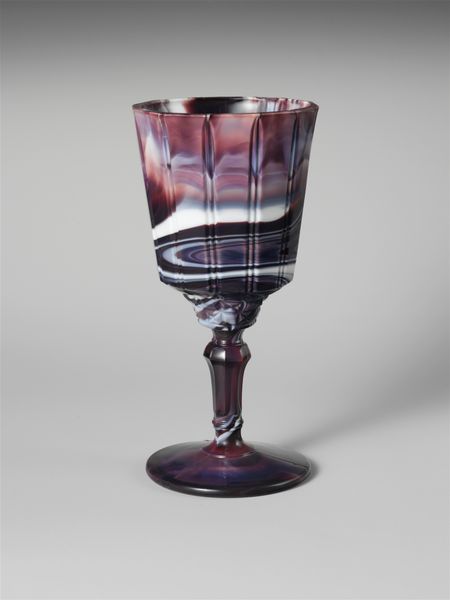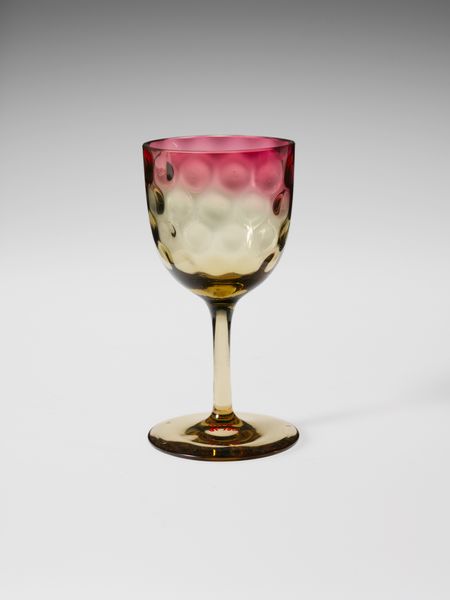
photography, glass
#
studio photography
#
product photograph merchandise
#
advertising product shot
#
product studio photography
#
product shot
#
product fashion photography
#
photography
#
glass
#
product design photgrpaphy
#
metallic object render
#
united-states
#
graphic design product photography
#
product photography
Dimensions: H. 3 3/8 in. (8.6 cm); Diam. 2 15/16 in. (7.5 cm)
Copyright: Public Domain
Curator: Oh, doesn't that just glow? There's such warmth in that photograph of the “Punch Glass” from the New England Glass Company, circa 1880-1888. It just begs to be filled with something bubbling and festive! Editor: I immediately notice the controlled gradation of color, from rich crimson to amber, almost as if the glass itself were forged through alchemy. The precision speaks of a highly skilled glassblowing process, doesn't it? What’s compelling is this kind of studio shot becoming a method to popularize functional glass, really a merging of utility and artistic intention. Curator: You’re right, it does speak volumes about its production. I think that simple form is elevated through color, no? A play of light, even within the picture. This isn’t just about what it holds; it’s what it *reflects*. Like gazing into a sunset distilled into an object. Editor: Absolutely. And the handle, that simple loop, becomes a focal point by virtue of its contrast—not just color but form as well, almost challenging what we define as decorative versus utilitarian elements. Consider also, glassblowing then involved rigorous labor. Observing details becomes about observing social conditions of its production too. Curator: Labor, artistry, purpose, absolutely. In a way, isn’t it a story told in glass and captured in that product shot, about the ambition of the United States at that time? Everyone wants the pretty object and rarely thinks about how and from what it comes, don't they? Editor: Right, mass production and mass consumption narratives were taking form then. An image, a glass, speaks of how it fits into the emerging economy of its time. So more than aesthetic, it symbolizes America finding ways to build demand. Curator: Perhaps, even in this quiet image, there’s the faintest echo of the party about to happen, a ghost of conviviality. One day it might disappear, get broken or whatever. What then? The object is gone but its intention continues. Editor: True, and the image survives. We dissect the image to keep those whispers resonating, don't we? In its essence, isn’t this glass's image asking viewers to reassess art's place in the everyday. A democratizing effect, if you will.
Comments
No comments
Be the first to comment and join the conversation on the ultimate creative platform.
